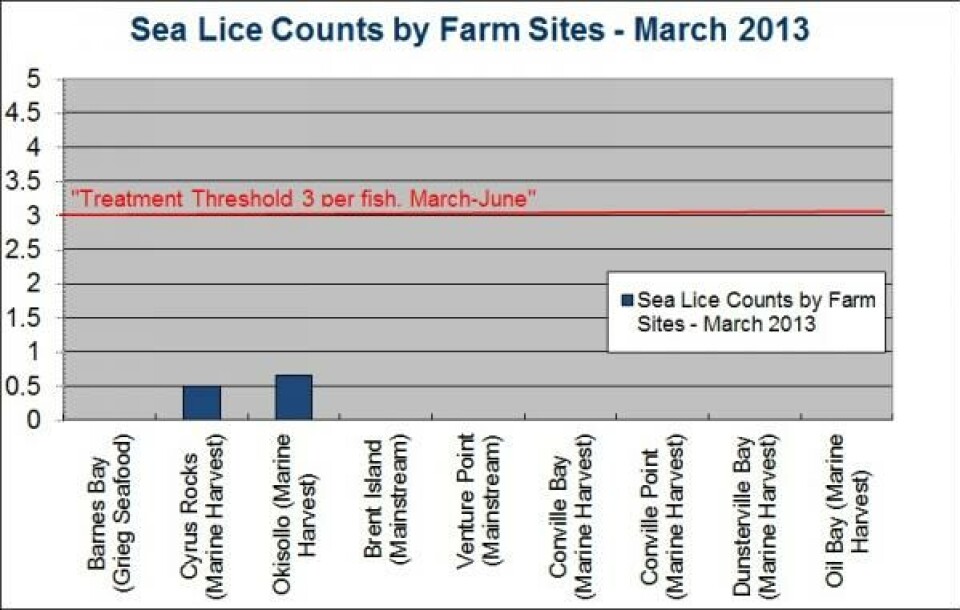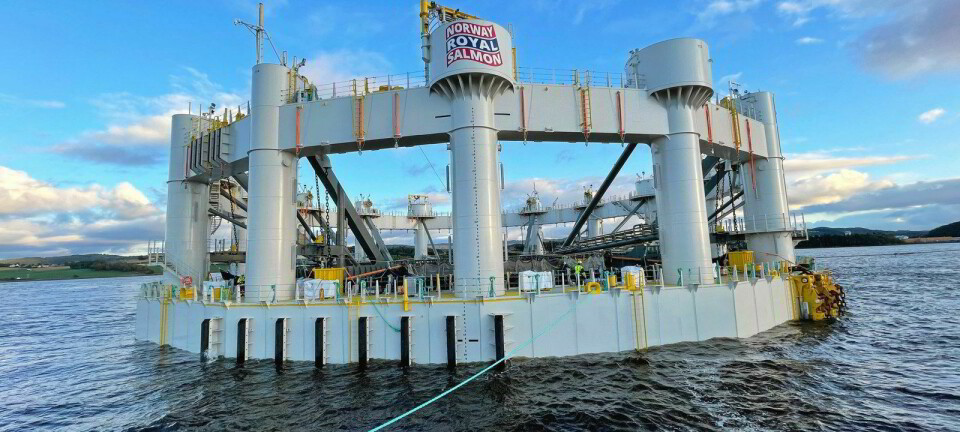
B.C. sea lice levels low
The issue of naturally occurring sea lice on wild and farmed salmon was one of the “hot topics” during an investigation into the low number of returning sockeye salmon to the Fraser River in British Columbia four years ago. And while the Cohen Commission didn’t find this to be a “smoking gun” during its inquiry, it did recommend a limitation on farmed salmon production in an area called The Discovery Islands, a small area of islands and narrow channels just north-east of Campbell River.
While damage from sea lice has never been a serious problem for the health of farmed salmon in B.C., the parasites have caused havoc with farmed fish in places like Scotland, the East coast of Canada, Chile and Norway. Norway is currently producing over a million tonnes of farmed salmon and trout each year- compared with some 75,000 tonnes coming from farms in B.C., which has a similar coastline. And Norway is still the second largest exporter of seafood in the World. Wild salmon stocks there are certainly not like they used to be before acid rain and drift-net fishing, but the country still has the biggest returns of Atlantic salmon anywhere. Near the author’s home town, the “Queen of Rivers” saw an increase in the sport catch of salmon in the Namsen River increase by about 27 per cent last year, despite the presence of many salmon farms in the fjords outside the river mouth. And many of the salmon caught by hook and line were classified as “large”- over 7 kilos (15.4 pounds). Since 1993 there have been six seasons when over 25 tonnes of Atlantic salmon were caught in this river.
Back to the Discovery Islands and this special area of concern to Judge Bruce Cohen- the B.C. Salmon Farmers Association continues to report on the result of monitoring for sea lice on the nine salmon farms in the region. Here is some recently released information;
The sea lice count numbers for April show levels in the Okisollo/Hoskyn Channel area continue to be below the threshold for treatment as required by regulation. Okisollo Channel is located just north of Campbell River and is home to five farms: two of Marine Harvest Canada’s, two of Mainstream Canada’s and one operated by Grieg Seafood. Hoskyn Channel, on the east side of Quadra Island has four Marine Harvest Canada sites. All three companies have agreed to an area management plan for the channels.
Regular sea lice counts being proactively shared by BC’s salmon farmers will help speak to recommendations made by the Cohen Commission of Inquiry into the Decline of the Fraser River Sockeye. For the fourth year, the BC Salmon Farmers Association will update the public about operations and sea lice counts on a site-by-site basis in the Okisollo/Hoskyn channel area –found in the Discovery Islands region discussed in recommendations made by Justice Cohen in his final report last fall. “The amount and quality of information that our members produce was identified as helpful and important to the commission. With our ongoing goal of transparency, we are eager to continue sharing with the public,” said Mary Ellen Walling, Executive Director of the BCSFA. This will be the fourth year that the BC Salmon Farmers Association updated the public about sea lice numbers on farm sites in the area throughout the wild salmon outmigration period. These reports will continue through July.
Okisollo Channel is located just north of Campbell River and is home to five farms: two of Marine Harvest Canada’s, two of Mainstream Canada’s and one operated by Grieg Seafood. Hoskyn Channel, on the east side of Quadra Island has four Marine Harvest Canada sites. All three companies have agreed to an area management plan for the channel. Currently there is only one farm in the area under operation: Cyrus Rocks. A sea lice count was also reported for March on Marine Harvest Canada’s Okisollo farm site, though the farm is now fallow following a regular harvest. These farms are well managed and highly regulated to ensure that wild stocks migrating past these sites are protected, no matter how many of the farms are operating. Sea lice numbers are monitored regularly and show levels below the threshold levels for treatment as required by regulation.






















































